Khanh Van Nam Vien Taoist Temple
Description
Ho Chi Minh City’s Khanh Van Nam Vien Taoist Temple is one of the largest Taoist temples in South Vietnam. It includes Three teachings (three religions including Confucianism, Taoism, and Buddhism). Since over a century ago, this mystery temple has been an integral component of the religious life of the Chinese and Vietnamese populations in Saigon.
History Of Khanh Van Nam Vien Taoist Temple
Twelve Taoist monks from Nam Hai Tra Son Khanh Van Dong in the Nanhai District of Guangdong Province, China, traveled to Hong Kong in 1934. Three of them arrived in Vietnam in 1936 and introduced Taoism to the Chinese population of Saigon Cholon (Saigon China Town).
The original Toan Khanh Duong Taoist temple was built in a house on Tran Hung Dao Street. As the number of Taoist monks expanded, the residence became too tiny.
Khanh Van Nam Vien Taoist Temple in Ho Chi Minh City was constructed in the 1930s in imitation of Nam Hai Tra Son Khanh Van Dong in Nanhai District, Guangdong Province, China.
Through 2020, the temple will have more than 2,000 adherents (followers). The priests include Tran Khai Minh (1936-1943), Au Dieu Duyen (1944-1968), Chau Viem (1968-2013), Chau Hue Bang (2013-now).
Before 1950, every Taoist monk in China was from Nanhai, Guangdong. Later, Teochew, Fujianese, and Vietnamese residents of Saigon converted to Taoism.
Architecture Of Khanh Van Nam Vien Taoist Temple
The design of Khanh Van Nam Vien Taoist resembles that of the Chinese Nam Hai Tra Son Khanh Van Dong. The temple is created with gates, a courtyard, and two levels.
There are three gates: the main gate, the side gate on the left, and the side gate on the right.
Three kings (Three Emperors), referring to Guanyin (Guan Yin), Wenchang Wang (De Quan Van), Guan Yu (Quan Thanh De Quan), and Lü Dongbin (Lu Dong Tan, Lu Dong) Tan, are revered in the great hall on the ground floor at the central altar. Left altar is dedicated to Hua Tuo, while the right altar is dedicated to Wong Tai Sin (Hoang Dai Tien).
Laozi (Lao Tzu), Gautama Buddha (Buddha), and Kitigarbha (Tertiary) are venerated on the second floor.
In China’s Nam Hai Tra Son Khanh Van Dong, the second floor is dedicated to Jade Emperor worship. In Ho Chi Minh City’s Khanh Van Nam Vien Taoist Temple, there is no second storey.
The main gate features three openings and three green curved roofs, with Hulu and two carps perched on the middle roof. Four pillars bearing Chinese characters support the entrance. The signboard displayed the temple’s name in Chinese.
The expansive front yard is filled with mature green trees, with a cluster of bamboo next to the fence. On typical days, the main gate is closed, but the left side is accessible to tourists. Visitors may view the crimson exterior of Khanh Van Nam Vien Taoist Temple in Ho Chi Minh City from the front yard. On the ground floor, the main hall has three entrances.
The main hall on the ground floor features three colorful wooden altars adorned with embroidered drapes, fans, and umbrellas with dragon and phoenix designs. Colors of red and yellow dominate the main hall.
The first floor is accessible by the stunning marble staircase. The purpose of the light well was to provide more natural light and fresh air into the temple’s corridors and apartments.
Gallery / Photos
Working Hours
- Monday 6:30 AM - 5:30 PM
- Tuesday 6:30 AM - 5:30 PM
- Wednesday 6:30 AM - 5:30 PM
- Thursday 6:30 AM - 5:30 PM
- Friday 6:30 AM - 5:30 PM
- Saturday 6:30 AM - 5:30 PM
- Sunday 6:30 AM - 5:30 PM

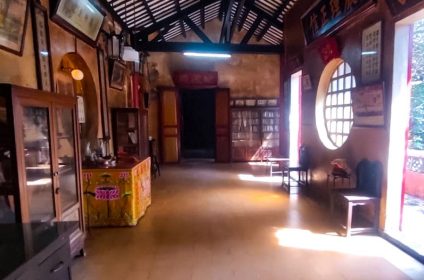
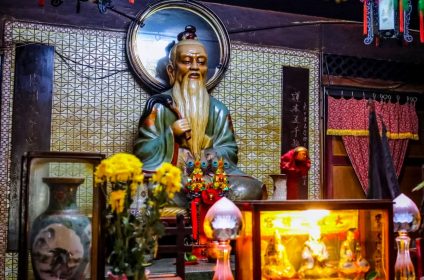
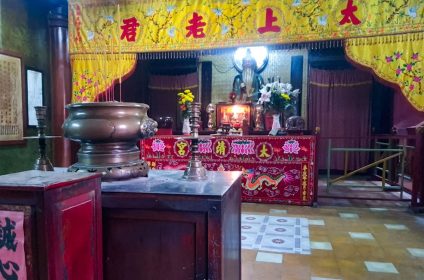
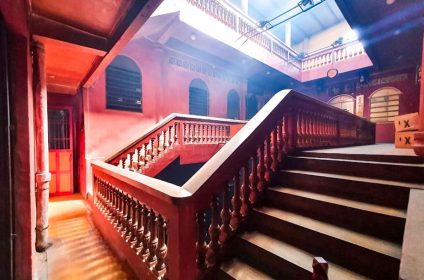
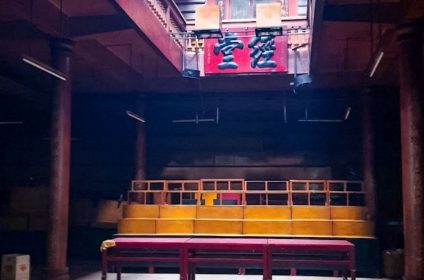
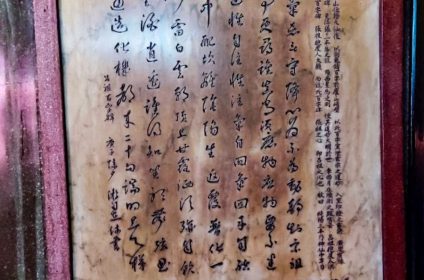
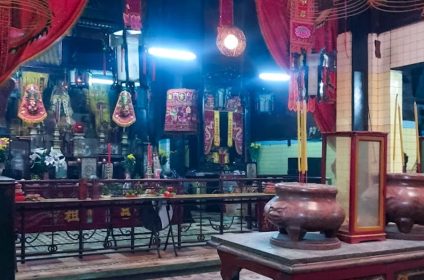
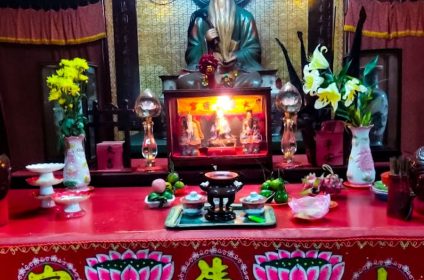
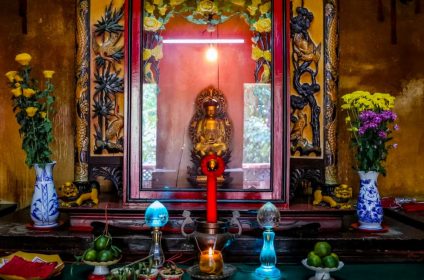
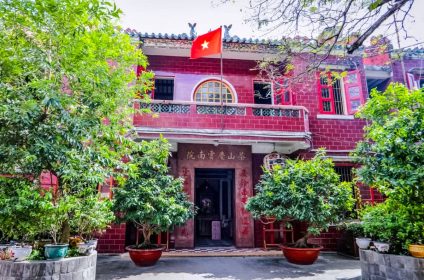
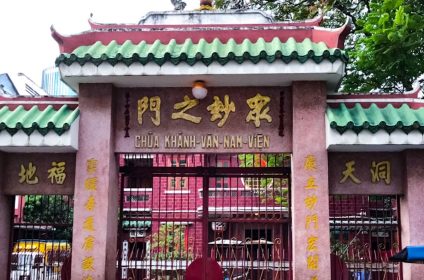
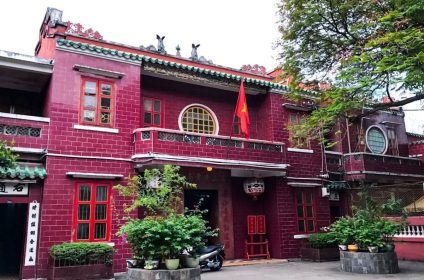
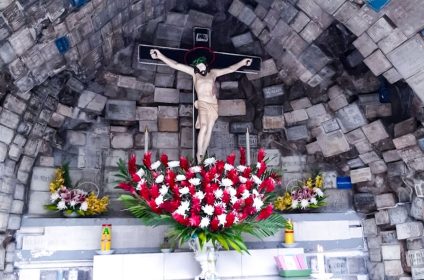
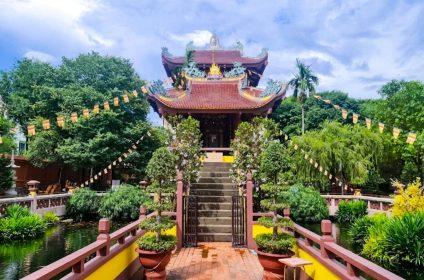
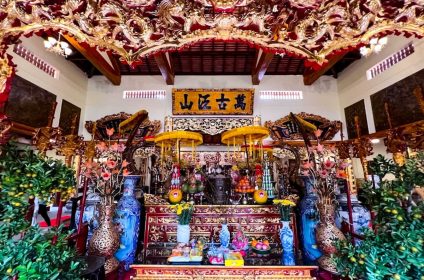
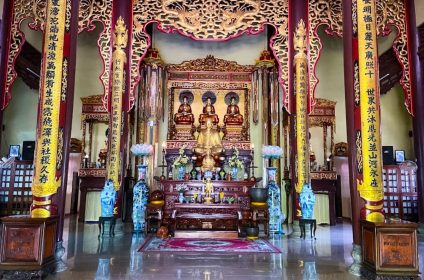
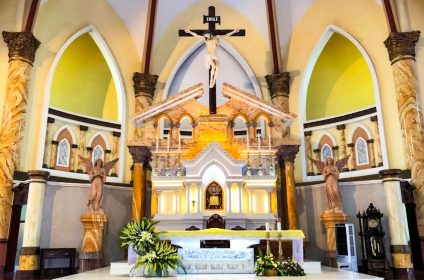










Add Review